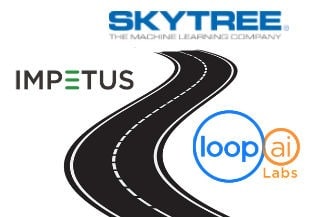
Sales automation will likely take away routine sales jobs, but a new IoT architecture is discussed that allows data from CRM, CPQ and other systems to allow sales and marketing to reach the right customer at the right time.
Imagine the tragic end of the dinosaurs 65 million years ago. There they were, going about their business, barely taking note of the asteroid streaking across the sky that would lead to their doom. The resulting cataclysm forced creatures to adapt or perish: Some dinosaurs eventually evolved into birds, and other animals (most notably mammals) ascended because of their unique abilities to thrive in a new world.
Depending on the industry they work in, salespeople may be as unaware of impact of the Internet of Things (IoT) as the dinosaurs were of the coming impact of their celestial assailant. They may be going about their business contentedly as the IoT develops – but that business is going to change, and they need to be prepared to adapt.
The IoT is shorthand for the connected network of devices, some quite mundane, that are increasingly being equipped to collect and transmit data about themselves. We already have many of these devices in our homes and businesses – there are already 15 billion devices in use that can send data via the Internet, and by 2020 that number will jump to 26 billion, according to Gartner.
Death of the Salesmen

As a result, Forrester earlier this year predicted that 1 million B2B salespeople in the U.S. would lose their jobs to self-service eCommerce by 2020. That amounts to one-fifth of the B2B sales force. That number is debatable, but the reality is that the IoT will force an evolution of the sales force, and of sales automation.
The IoT and the automatic selling it will permit have plenty of positive benefits: customers will get what they need on time, businesses will make sales more quickly, and if it’s done correctly it can reduce customer churn and build loyalty by creating a better customer experience. But salespeople will find contact opportunities with customers diminish, threatening their ability to add value to those accounts.
What salespeople need is to create a programmatic way of communicating with customers to build rapport, collect information for possible up-selling opportunities and reinforce trust. They’ll have to schedule those contact opportunities, either based on the calendar or triggered by events. Luckily, customer-relationship management can handle this in most cases – scheduling of contacts is one of the most basic CRM capabilities, and smart salespeople will use it in the future to remind them to inject some human interaction into sales relationships that have gone on autopilot thanks to IoT technology.
New Architectures for Sales Automation
The IoT will also force CRM and sales force automation (SFA) to be more tightly integrated with sales operations systems like configure price quote (CPQ) and sales enablement. An IoT sale is going to require salespeople to articulate the value of the IoT, and to explain how the selling company will use the buying company’s data. For this to work, the salesperson needs to be a subject matter expert not just on his or her products and services but on how the company handles and responds to data.
This kind of complex information is exactly what CPQ and enablement are great at delivering when they’re needed; CRM and marketing automation can deliver helpful information on when customers are ready to have this information “pushed” to them, but CPQ and enablement can help when the customer asks for information and starts the “pull” on the other side of the equation.
The IoT era will place greater emphasis on trust for the customer, but it will also increase the emphasis on longer customer lifespans. Retention will gain in value as automated selling increases the value of relationships for both seller and buyer. CRM is already especially useful in encouraging loyalty and combating churn – as long as sales and marketing are both working from the same data. As a result, marketing automation applications that work in tandem with CRM through tight integration will gain importance, and marketers will make greater use of CRM data to segment customers and personalize marketing messages.
And the system used to collate and organize IoT data needs to be integrated with systems that collect customer data as well. To have a 360-degree view of the customer means rolling in data collected by sales (in CRM) with IoT data, providing a portrait that includes demographic information, customer history, sales and marketing activities, and real usage data generated by the IoT.
This all sounds complex – but when all the data is pulled together, it will allow sales to focus on taking the right actions at the right time. While the IoT promises to expand the customer data at our disposal, it’s still up to the salesperson to translate it into action and to connect with the customer – in a new way, perhaps, but also with the human talents salespeople have needed since the dawn of selling.
Want more? Check out our most-read content:
Frontiers in Artificial Intelligence for the IoT: White Paper
Beyond Sensors: IBM on Use Cases for Real-Time Data
Why Data Integration Needs to Evolve for the IoT
Real-Time Traffic Management With Road Signs
Liked this article? Share it with your colleagues!





























